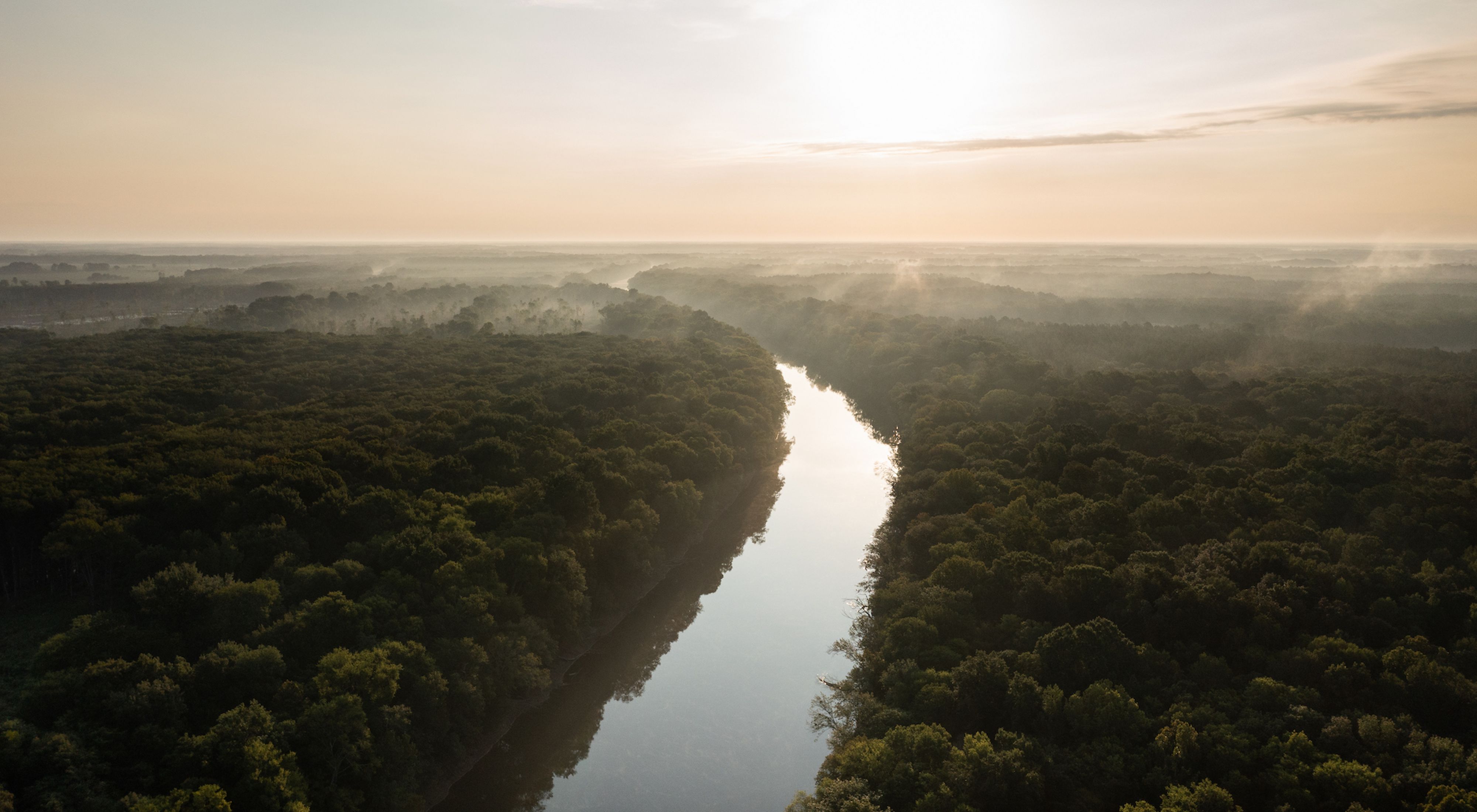Roanoke River Fish Work Receives $3.2 Million Boost
TNC has received a $3.2 million grant from NOAA to replace six undersized culverts with bridges and remove two earthen barriers within the floodplain.
Media Contacts
-
Debbie Crane
Communications Director
The Nature Conservancy
Phone: 919-619-8613
Email: dcrane@tnc.org
The Nature Conservancy has received a $3.2 million grant from the National Oceanic and Atmospheric Administration (NOAA) to replace six undersized culverts with bridges and remove two earthen barriers within the floodplain of the lower Roanoke River. Removal of these eight barriers will benefit migratory species such as blueback herring and shad, which spend most of their life at sea but come upriver to spawn. It will also provide community benefits by reducing flooding and improving water quality in the watershed. The restoration projects will open more than 5.1 miles of stream and more than 1,130 acres of floodplain forest. The funds come from the Bipartisan Infrastructure Law, which was approved by Congress in 2021.
“This is a wonderful way to end 2022—a gift for all of us who love the Roanoke River,” says TNC in North Carolina’s Water Program Director Julie DeMeester. “We’re building on a lot of momentum here. We’ve already opened more than seven miles of stream in the region; this new influx of money will help us continue this important work.”
“We’ve learned a lot from our stream restoration on the Roanoke,” says TNC’s Northeastern NC Steward Aaron McCall, who will lead the on-the-ground restoration. “We know now what works best in removing these barriers. It’s gratifying to see that our past efforts are already paying off. We are seeing blueback herring move through areas that had previously been barricaded.”
This restoration builds on more than three decades of TNC work on the Roanoke, which is one of the largest and least developed rivers on the East Coast, with impressive aquatic species diversity and floodplain forest habitat. TNC worked with the U.S. Army Corps of Engineers and Dominion Energy, which operate three dams on the river, so that water releases from the dam more closely mimic natural flows. During flood operations, the dams release higher flows but for shorter durations. This dam operation strategy promotes the ebb and flow of water, which supports a healthy floodplain, opens habitat and ensures good water quality.
But barriers remain. The floodplain has been altered by road crossings and undersized culverts that hold floodwaters and trap fish. The standing water also degrades water quality; dissolved oxygen is depleted, and fish suffocate. The Nature Conservancy is replacing the culverts under roads with fish-friendly bridges, which allow floodwaters to rise and fall. Instead of being trapped and killed, the fish can continue their way upstream to spawn as they have been doing for millennia. The work will also benefit people by reducing standing floodwaters.
The Nature Conservancy is a global conservation organization dedicated to conserving the lands and waters on which all life depends. Guided by science, we create innovative, on-the-ground solutions to our world’s toughest challenges so that nature and people can thrive together. We are tackling climate change, conserving lands, waters and oceans at an unprecedented scale, providing food and water sustainably and helping make cities more sustainable. Working in more than 70 countries and territories, we use a collaborative approach that engages local communities, governments, the private sector, and other partners. To learn more, visit nature.org or follow @nature_press on Twitter.
